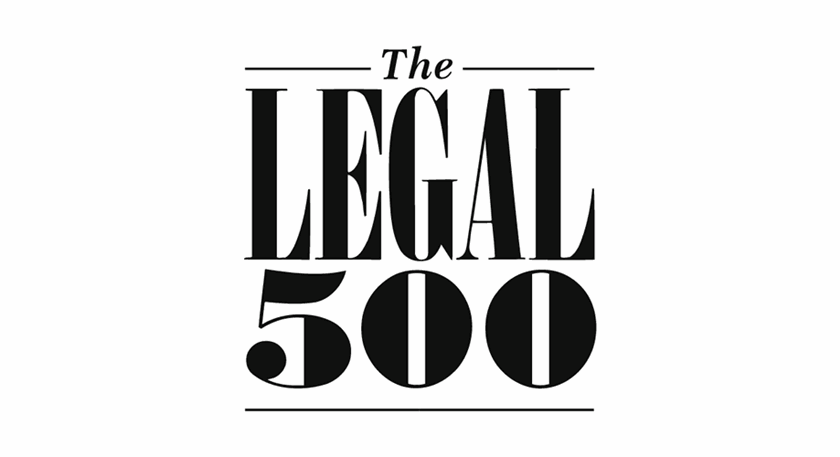Understanding consent
Insight

The current national conversation is once again focused firmly on sexual violence.
Dubbed the #MeToo movement in schools, the website and Instagram pages of Everyone’s Invited hosts anonymous testimony of sexual violence mainly involving girls and women in schools and universities. Everyone’s Invited has caused the education sector to consider urgently how they educate children on topics such as consent, healthy relationships, privacy, social media use, personal safety, discrimination, use of pornography amongst many other related topics.
Some of the anonymous testimony has also criticized the way that allegations have been handled by staff and schools, emphasizing the need for staff, as well as pupils, to understand how to make and respond to disclosures and raise concerns but also the law around consent. This is echoed in the Department for Education’s non-statutory guidance on Sexual violence and sexual harassment between children in schools and colleges which sets out the importance of staff, in particular designated safeguarding leads and their deputies, understanding consent, especially where a child reports that they have been raped.
In this briefing, we explain the law of consent and provide four central recommendations for measures that schools can put in place.
The law
There are a number of sexual offences which are classed as crimes under the Sexual Offences Act 2003 (the Act). Two examples of these are rape and sexual assault; both of which occur in the absence of consent.
In order to determine whether a particular scenario amounts to a sexual offence, it is essential to define the offence itself. For example:
- Sexual assault is the intentional sexual touching of another person without consent.
- Rape is the intentional penetration of the vagina, anus or mouth of another person by a man with their penis without consent.
It is important to note that part of the definition of sexual assault, ‘intentional sexual touching’, is defined as a wide range of conduct. There is no requirement for force or violence, so the very lightest touching can be sexual assault. Touching includes touching with any part of the body, with anything else, and through anything. As a result, it can be on top of clothing and the victim does not have to be aware that they are being touched. If there is no touching, the conduct might constitute attempted, but not actual, sexual assault depending on the circumstances.
Any school which receives a disclosure of such behaviour between peers, would be automatically reporting the case to the Local Authority Children’s Social Care/Children’s Services department and the police and calling for a multi - agency strategy meeting. Children displaying harmful sexual behaviours or involved in allegations are not spoken about in the language of “perpetrator” or “suspect” because everyone involved is likely to be a child in need of support or the right interventions.
The age of consent
The legal age of consent is 16, regardless of the gender or sexual orientation of a person, and whether sexual activity is between people of the same or different gender.
Section 13 of the Act makes it an offence for a youth under 18 to:
- have sexual activity with a child under 16;
- cause or incite a child under 16 to engage in sexual activity;
- engage in sexual activity in the presence of a child; or
- cause a child under 16 to watch a sexual act.
It is important to note that an offence is not committed if the child is over 13 but under 16, and the youth has reasonable belief that the child is 16 or over. It should be noted that where both parties to sexual activity are under 16, then they may both have committed a criminal offence.
That said, the main purpose of the Act is to protect children. As set out in the Home Office guidance, Children and Families: Safer from Sexual Crime – the Sexual Offences Act 2003, the law is not intended to prosecute and criminalize mutually agreed teenage sexual activity between two people of ‘a similar age’, unless it involves abuse or exploitation – please note, ‘a similar age’ is not defined. The Crown Prosecution Service guidance confirms this point by stating that ‘consensual sexual activity between, for example, a 14 or 15-year-old and a teenage partner would not normally require criminal proceedings in the absence of aggravating features’, such as:
- the respective ages of the parties;
- the existence and nature of any relationship;
- their level of maturity;
- whether any duty of care existed;
- whether there was a serious element of exploitation.
Those aged 12 and under cannot legally give consent to any form of sexual activity. Therefore, any sexual activity with someone under 13 is automatically an offence, regardless of the circumstances.
The Act also states that it is illegal for an adult in a position of trust to be involved in sexual activity with a person who is 16 or 17 years old. An adult is in a position of trust where a young person in their care has some dependency on them and there is an element of vulnerability involved, for example when an adult is providing care for a child in a residential care home, hospital or educational institution. So, teachers, care workers, sports coaches, religious ministers and youth justice workers would all be in a position of trust.
Defining consent
For people aged 13 and over, the law says a person consents if ‘he or she agrees by choice and has the freedom and capacity to make that choice’.
There are therefore two important concepts to unpack in order to understand consent: (1) capacity and (2) freedom:
1. Capacity: a person does not have capacity if their knowledge and understanding are so limited that they are not in a position to decide whether to Capacity can be affected by a range of different things, for instance, a person’s age as they might be too young to be able to make an informed decision, their vulnerabilities, or being intoxicated by drugs or alcohol, asleep or unconscious. A number of the Everyone’s Invited cases fall into these latter categories. Therefore, a pupil will not have capacity to engage in sexual activity if they are too young, drunk or are vulnerable due to mental health, learning or physical difficulties, even if they seem willing.
2. Freedom: previously, freedom in the context of consent was extremely narrow – a person was free to consent if they were not subjected to any violence or threats of Now, there does not have to be violence or threats because the courts recognise there are other ways to put pressure on people so that they cannot make a genuinely free choice. For example, in the context of domestic abuse the alleged perpetrator may use force or power to remove a complainant’s freedom to consent and in recent years there has been considerable expansion of the law and understanding of risks of coercive controlling behaviour which can occur in peer relationships. Other examples include where the alleged perpetrator is in a position of power or status (such as a family member, teacher, religious leader, employer, gang member, carer, or doctor) and can exploit the trust of the complainant, or where the complainant is dependent on the alleged perpetrator financially or for care, or where the complainant is significantly younger than the alleged perpetrator.
For the police and court to establish whether a person consented, they need proof that the alleged perpetrator reasonably believed the other person was consenting. They will consider all the circumstances around what the alleged perpetrator has done, including the steps they took to obtain consent. This is extremely difficult to determine because it is incredibly subjective and context specific.
Many rape and sexual assault cases do not reach the stage of criminal proceedings and it is our experience that a lot of responsibility can be placed on teenage girls to decide whether or not they will support a criminal case. The police can embark on victimless prosecutions and local authorities can also carry out investigations (known as “section 47” enquiries after section 47 of the Children’s Act 1989) where a local authority has reasonable cause to suspect that a child is suffering or is likely to suffer significant harm. Where a decision is made that there will be no investigation by a statutory agency, the school needs to consider whether it can establish an investigation into the disclosures.
Schools should also remember that where they feel that a child is not receiving the help they need, a school should use the local authority’s escalation procedures to procure more help.
What can schools do?
This is understandably a very tricky area for schools to navigate. We have set out four recommendations of measures that schools can put in place around the issue of consent:
1. Understand their role when receiving a disclosure from a pupil who has not consented
Schools must understand what their role is when they receive a disclosure from a pupil who says they did not consent to a sexual activity. It is important to note that, whilst schools should have an understanding of potential sexual offences and the definition of consent so they can determine whether to report an incident to the police or local authority, a school does not need – and should not seek – to determine at the outset whether the accused pupil reasonably believed that the other person was consenting, that would be the job of the police. For example, the school should not start asking questions about whether, on balance, the person making the allegations was able to consent, or if the accused had reasonable belief that they were consenting. As set out above, these are questions for the police and the courts, which operate under completely different processes from the school’s internal disciplinary process. The school’s job is to ensure everyone’s immediate safety and any medical needs, take detailed notes of the disclosure and make a referral.
The school should therefore not ask themselves whether an offence has occurred, but instead treat a disclosure as a viable complaint and make reports to the authorities. Schools then need to take advice about risk assessments and safety plans and there are a range of tools available to schools in such circumstances.
2. Ensure classroom teaching on consent is robust and that a “whole school approach” is taken
Schools should revisit their PSHE or Relationships & Sex Education curriculum to ensure that their pupils are receiving robust education on the concept of consent, healthy relationship and other topics such as jealousy and control. There are many useful online resources which they can make available, for example this helpful video by Thames Valley Police simply explains consent through the analogy of making tea! The video sets out scenarios where no consent is given even if a person seems willing, for example where they change their mind about taking part in sexual activity – this can be at any time, whether during the sexual activity or at a later date. Additionally, this useful NHS leaflet sets out helpful clarifying examples, such as is no consent where a person consents to one type of sexual activity but another takes place, or if consent is given on the condition of a condom being used which is then not used or removed. There are many resources for schools on the area of healthy relationships including from childnet and Women’s Aid. Parents too play a critical role in the education of their children and in modelling respectful relationships. Many will need education on the issues too so where possible, Schools should work with parents and other community partners, so the message is reinforced at home as well as school.
We recommend a whole school approach to the subject of sexual violence which involves all parts of the school working together in partnership and being committed to the subject.
3. Ensure staff receive adequate and regular safeguarding training
Children can make disclosures to any trusted adult. It is therefore essential that all staff receive regular and adequate safeguarding training on how to handle a disclosure as well as the concept of consent so that staff are aware of how to teach students about these issues in the classroom, navigate positive conversations about consent and are able to sensitively handle disclosures. This should have a positive impact on the culture of the school and make it more likely to children will disclose concerns or allegations or indeed voluntarily seek help for their own behaviour. It is essential that staff do not question whether a pupil making the disclosure was able to consent or to make any judgements about whether the pupil consented.
4. Offer internal and external support
Schools should take this opportunity to review their internal support systems but also source and reach out to local specialist services in the area such as Rape Crisis centres – this has proved useful for the Higher Education sector. It is important to understand that victims of sexual violence need information about their rights and options; advocacy, particularly if going through the criminal justice system and in some cases therapeutic services. The school should also offer resources to external support organisations like Rape Crisis, Barnardo’s and the NSPCC helpline and when the police are involved in cases, try to ask that specialist SOIT officers (Sexual Offences Investigative Techniques) are leading on the case.
With thanks to Xinlan Rose for help with this article.
If you require further information about anything covered in this briefing, please contact Maria Strauss, Katie Fudakowski, or your usual contact at the firm on +44 (0)20 3375 7000.
This publication is a general summary of the law. It should not replace legal advice tailored to your specific circumstances.
© Farrer & Co LLP, July 2021
Please note this content was originally published in the Summer 2021 edition of the Independent Schools’ Bursars Association (ISBA) termly magazine, “The Bursar’s Review”, issued 11 June 2021, and is reproduced with the kind permission of ISBA.







